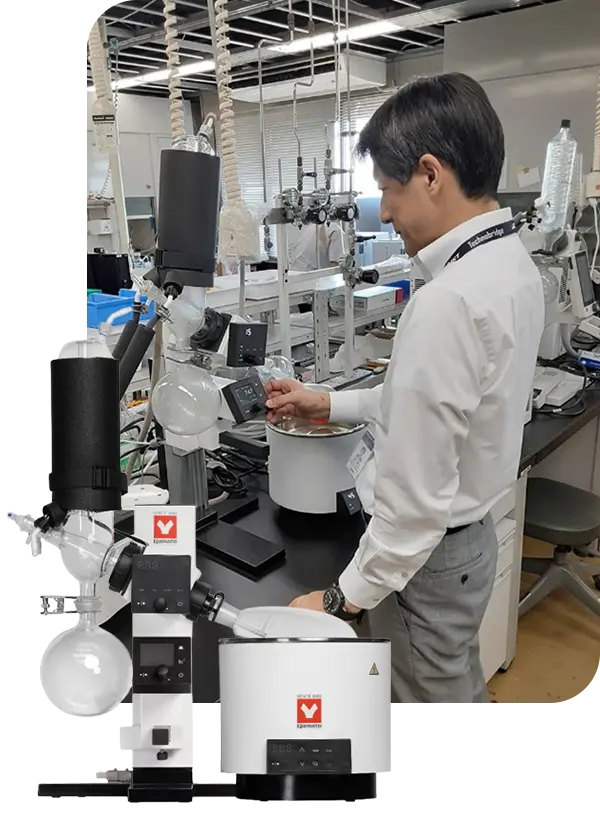Microdosing Psychedelic R&D
How rotary evaporation creates consistent granules for cinical trials and helps lower the costs associated with variation.
In early-phase clinical research, accuracy is everything. When working with psilocybin microdoses, even microgram variations in each unit can alter trial outcomes and muddy your data. You're not just measuring therapeutic effects - you're establishing dose-response relationships that will shape years of subsequent research. The challenge? Turning a psilocybin-containing formulation into consistent, stable granules without degrading the active compound.
This isn't theoretical. Inconsistent dosage undermines data integrity, triggers regulatory scrutiny, and can invalidate months of trial work. Every granule needs the same amount of active compound, the same moisture content, and the same dissolution profile. Rotary evaporation delivers this precision through controlled, reproducible solvent removal while maintaining compound integrity at temperatures that won't cook your expensive API.
If you don’t want to learn about this, and you just want the rotary evaporator we built for this application, you can customize your psychedelics R&D rotary evaporator package in less than 20 seconds.
Why Is Granule Form Critical for Psychedelic Microdosing Trials?
Granules solve five fundamental problems in psychedelic clinical research. First, they enable precise weight-based dose control - you can weigh out exact doses down to the milligram, something impossible with liquid formulations where concentration gradients develop over time. Second, the solid form dramatically reduces degradation compared to solutions or suspensions that expose the compound to ongoing hydrolysis.
The practical advantages multiply from there. Granules minimize material loss during handling, improve operator safety by reducing exposure risk, and lower contamination potential compared to liquid transfers. They're also scalable - the same process that produces 10 grams for your pilot study can be adapted to produce kilograms for Phase II trials. Perhaps most importantly for double-blind studies, granules simplify packaging, blinding, and distribution logistics that would be nightmarish with liquids.


How Does Rotary Evaporation Support Consistent Psilocybin Granulation?
The physics of rotary evaporation align perfectly with the demands of psilocybin processing. By removing solvent under vacuum at 30-40°C, you're operating well below the degradation threshold while still achieving efficient drying. The rotating flask creates a constantly renewed thin film - typically 0.1-0.3mm thick - ensuring uniform exposure to heat and vacuum across your entire batch.
This thin film is critical. In a static tray, your material would form a crust on top while remaining wet underneath, creating concentration gradients that translate directly into dosage variability. The rotation eliminates this problem while also allowing precise control over particle characteristics through vacuum staging. Start at 200 mbar to remove bulk solvent gently, then gradually decrease to 50 mbar for final drying - each stage influences granule density and hardness.
The process also accommodates essential excipients without thermal damage. Your antioxidants, pH buffers, and controlled-release polymers maintain their functionality because they never see the 80-100°C temperatures common in tray drying or fluid bed processing.
What Are the Stability Concerns for Psilocybin During Processing?
Psilocybin faces three primary degradation pathways during pharmaceutical processing: thermal decomposition above 70°C, oxidation in the presence of oxygen and light, and hydrolysis in aqueous environments. Each pathway can reduce potency by 10-30% if not controlled, turning your carefully calculated 100μg dose into an unpredictable 70-90μg reality.
Vacuum evaporation addresses all three concerns simultaneously. The reduced pressure environment minimizes oxygen exposure while lowering the boiling point of your solvent system by 20-40°C. Operating at 35°C under 100 mbar vacuum, ethanol evaporates as efficiently as it would at 78°C under atmospheric pressure - but your psilocybin never experiences that heat stress. The amber glass evaporating flask provides additional light protection during processing, while the continuous rotation prevents hot spots that could trigger localized degradation.
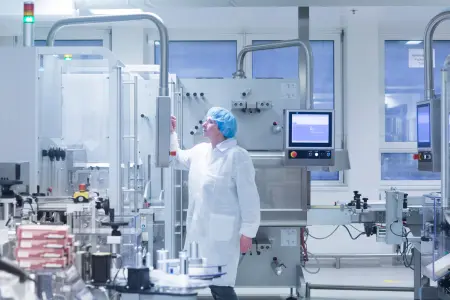
How Does Rotary Evaporation Improve Dosage Uniformity?
Uniform drug distribution starts with uniform drying, and that's where rotary evaporation excels. The thin film created by rotation ensures every particle experiences identical temperature and vacuum conditions. Compare this to spray drying, where droplets at the nozzle periphery dry faster than those in the center, creating a bimodal particle size distribution with corresponding dosage variability.
The programmable controls on modern rotary evaporators like Yamato's mini series take this further. You can create standard operating procedures (SOPs) that execute identically every time:
10-minute degassing phase at 150 mbar
30-minute primary drying at 80 mbar
15-minute conditioning at 50 mbar
Automatic cool-down and venting sequence
This reproducibility means your Monday batch matches your Friday batch, which matches the batch you'll make six months from now. For clinical trials where dosage consistency determines data validity, this programmability transforms from convenience to necessity.
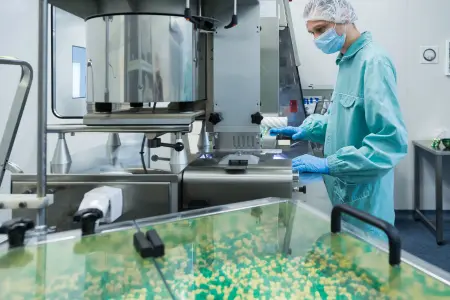
What Excipients Help Maintain Psilocybin Stability in Granules?
Your excipient selection can make or break granule stability. Start with antioxidants - ascorbic acid at 0.1-0.5% w/w or alpha-tocopherol at 0.05-0.2% w/w prevent oxidative degradation during storage. Add citric acid or tartaric acid to maintain pH between 4-5, where psilocybin shows maximum stability.
For granule structure, combine microcrystalline cellulose (15-25% w/w) with lactose monohydrate (10-20% w/w). The cellulose provides mechanical strength while the lactose ensures rapid dissolution. Include 2-5% croscarmellose sodium if you need faster disintegration, or 5-10% HPMC for controlled release profiles.
The beauty of rotary evaporation is that these excipients maintain their functionality. The gentle processing conditions preserve the antioxidant activity of ascorbic acid, maintain the crystalline structure of lactose, and prevent HPMC from forming insoluble films that could alter release kinetics.
How Do You Control Granule Size for Dosing Accuracy?
Granule size directly impacts dosing precision - smaller, uniform particles allow more accurate weighing for micro-doses. Three parameters give you control:
Slurry viscosity determines initial particle formation. Target 500-1500 cP using your binder concentration. Too thin and you get dust; too thick and you get chunks. Measure with a Brookfield viscometer at your processing temperature for consistency.
Rotation speed influences both drying rate and mechanical forces. Start at 60 rpm for viscous slurries, increase to 100-120 rpm as concentration increases. Higher speeds create smaller particles through increased shear, but exceed 150 rpm and you risk material climbing the flask walls.
Vacuum endpoint affects final particle consolidation. Stop at 5-7% residual moisture for granules that hold together without being rock-hard. Use Karl Fischer titration or near-infrared spectroscopy for precise moisture determination - guessing leads to batch rejection.
What's the Ideal Residual Moisture for Stability and Handling?
The sweet spot sits between 3-5% residual moisture for most psilocybin granule formulations. Below 3%, granules become brittle and generate fines during handling - those fines mean dosing variability. Above 5%, you risk microbial growth and accelerated degradation, especially if your water activity exceeds 0.4.
Achieving this target requires staged drying. Remove 90% of your solvent at standard vacuum (50-100 mbar), then reduce vacuum intensity (increase pressure to 150-200 mbar) for the final approach. This prevents over-drying while ensuring uniform moisture distribution. Monitor weight loss in real-time - when the condensation rate drops below 0.5 mL/min, you're approaching your endpoint.

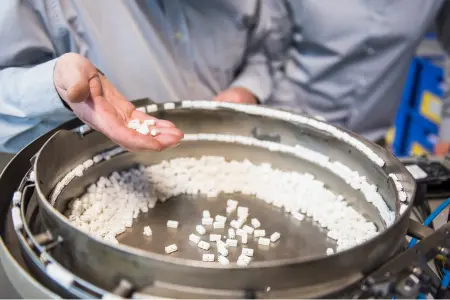
Can Granules Be Coated to Further Improve Stability?
Protective coating adds another stability layer, particularly for light and oxygen protection. Apply a 2-3% w/w coating of Eudragit E100 dissolved in ethanol/acetone (70:30) using a mini fluid bed coater post-granulation. This pH-dependent polymer dissolves rapidly in stomach acid while providing excellent moisture barrier properties during storage.
For enhanced light protection, incorporate 0.5-1% titanium dioxide or iron oxide into your coating solution. These opacifying agents block UV and visible light that could trigger photodegradation. The coating also reduces surface area exposure to oxygen, potentially extending shelf life from 12 to 24 months when combined with appropriate packaging.
How Do You Meet Regulatory Documentation Needs in R&D?
Clinical trial documentation demands complete process traceability. Every parameter, every deviation, every result needs an audit trail. Modern rotary evaporators address this through integrated data logging that captures:
More sophisticated approaches include:
Time-stamped temperature profiles
Vacuum curves showing pressure stability
Rotation speed verification
Batch identification and operator ID
Process deviations and alarms

Export this data in 21 CFR Part 11-compliant formats for direct integration into your batch records. Yamato's systems include USB ports for data export and optional software for real-time monitoring. This isn't just about compliance - it's about proving your process works identically every time, which is fundamental to IND applications and eventual NDA submissions.
How Scalable Is the Process from Micro-Batch to Pilot Scale?
The parameters you develop on a 500 mL flask translate predictably to 5 L or 20 L systems. The key is maintaining equivalent conditions:
Same film thickness (controlled by rotation speed and fill volume)
Same residence time (controlled by evaporation rate)
Same temperature delta between bath and product
Same vacuum profile and endpoint detection
Document everything during development: flask size, fill volume (aim for 30-40% of flask capacity), bath temperature offset, and condenser temperature. These become your critical process parameters (CPPs) for scale-up. A well-documented 50-gram R&D batch becomes the blueprint for your 5-kilogram GMP production run.
What Lab Security and Safety Considerations Are Unique to Psychedelic R&D?

Schedule I substances demand enhanced security beyond standard pharmaceutical R&D. Your rotary evaporator needs to operate within a DEA-compliant secure area with restricted access, surveillance, and detailed logs of every gram of material.
Yamato's compact footprint (330mm width) fits inside secure enclosures or restricted-access hoods. The anti-backflow condenser prevents contamination from vacuum pump oil - critical when you can't afford to lose or contaminate even milligrams of controlled substance. The enclosed design also minimizes operator exposure during processing, reducing both safety risks and the potential for diversion.
Consider these operational security measures:
Dedicate specific glassware sets to prevent cross-contamination
Implement two-person verification for all weighing and transfers
Use tamper-evident containers for intermediate storage
Maintain chain-of-custody documentation for every step
How Do You Prevent Active Degradation During Storage?
Post-processing storage determines whether your stable granules remain stable. Package immediately after production in amber glass vials or aluminum/aluminum blister packs. Include 1-2 gram silica gel sachets for bottles, or integrate desiccant into blister pack cavities.
Nitrogen headspace purging reduces oxidation risk - achieve <2% residual oxygen using a glove box or automated packaging line. Store at 2-8°C for maximum stability, though properly dried granules (<5% moisture, <0.4 water activity) remain stable at 25°C/60% RH for 6-12 months.
Monitor stability with HPLC assays at 0, 1, 3, 6, and 12 months. Track both psilocybin content and its degradation product psilocin - increasing psilocin indicates ongoing degradation even if total activity remains constant.

How Does Rotary Evaporation Compare to Alternative Drying Methods?
Each drying technology brings trade-offs:

Freeze drying
Freeze drying offers maximum gentleness but requires 24-48 hour cycles and produces fluffy, low-density cakes that need separate granulation. You're looking at $150,000+ for a research-scale freeze dryer versus $15,000 for a comparable rotary evaporator.

Tray drying
Tray drying costs less upfront but creates severe uniformity problems. Center areas retain moisture while edges over-dry. The static nature means 8-16 hour cycles with constant degradation risk. One hot spot ruins your entire batch.

Fluid bed drying
Fluid bed drying works well at production scale but struggles with cohesive formulations and requires minimum 500g batches - impractical when your entire API allocation is 10 grams. The violent agitation can also segregate particles by density, creating dosage variability.

Spray drying
Spray drying delivers speed but at the cost of brief exposure to 120-180°C inlet temperatures. Even with outlet temperature control at 40-60°C, that initial thermal shock can trigger degradation. The minimum batch size of 50-100 mL also wastes precious API during development.
Rotary evaporation balances these factors: gentle enough to preserve stability, fast enough for same-day results, small enough for 5-10 mL development batches, and scalable enough for clinical supply production.
What's an Example SOP for Microdose Granulation?
Here's a framework SOP that you can adapt (this is only illustrative, and you are not advised to follow this exactly. Use it as a guide and adapt your own processes to follow similar steps).
Solution Preparation
- Dissolve API in ethanol:water (70:30) at 10 mg/mL
- Add excipients: 5% HPMC, 15% microcrystalline cellulose, 10% lactose
- Include 0.1% ascorbic acid and adjust pH to 4.5 with citric acid
- Filter through 0.45 μm PVDF membrane
Equipment Set-up
- Set water bath to 35°C
- Verify condenser cooling at -10°C
- Install amber evaporating flask (500 mL for 150 mL batch)
- Program rotation at 80 rpm
Evaporation Sequence
- Add solution to flask (30% fill volume)
- Begin rotation without vacuum for 5 minutes (degassing)
- Apply 200 mbar vacuum for 10 minutes
- Reduce to 100 mbar for primary drying (monitor condensation rate)
- When condensation drops below 0.5 mL/min, reduce to 50 mbar
- Continue until weight loss ceases (typically 45-60 minutes total)
Product Recovery
- Vent to atmosphere gradually over 2 minutes
- Stop rotation and lower flask
- Scrape granules using PTFE spatula
- Pass through 30-mesh sieve to remove any aggregates
- Package immediately in amber vials with desiccant
What's an Example SOP for Microdose Granulation?
Here's a framework SOP that you can adapt (this is only illustrative, and you are not advised to follow this exactly. Use it as a guide and adapt your own processes to follow similar steps).
Solution Preparation
- Dissolve API in ethanol:water (70:30) at 10 mg/mL
- Add excipients: 5% HPMC, 15% microcrystalline cellulose, 10% lactose
- Include 0.1% ascorbic acid and adjust pH to 4.5 with citric acid
- Filter through 0.45 μm PVDF membrane
Equipment Set-up
- Set water bath to 35°C
- Verify condenser cooling at -10°C
- Install amber evaporating flask (500 mL for 150 mL batch)
- Program rotation at 80 rpm
Evaporation Sequence
- Add solution to flask (30% fill volume)
- Begin rotation without vacuum for 5 minutes (degassing)
- Apply 200 mbar vacuum for 10 minutes
- Reduce to 100 mbar for primary drying (monitor condensation rate)
- When condensation drops below 0.5 mL/min, reduce to 50 mbar
- Continue until weight loss ceases (typically 45-60 minutes total)
Product Recovery
- Vent to atmosphere gradually over 2 minutes
- Stop rotation and lower flask
- Scrape granules using PTFE spatula
- Pass through 30-mesh sieve to remove any aggregates
- Package immediately in amber vials with desiccant
Practical Troubleshooting Guide
Problem
Problem: Granules are too soft/sticky
Extend drying time by 15 minutes
Reduce final vacuum to 30 mbar
Verify bath temperature isn't below setpoint
Check if excipient ratio needs adjustment (increase MCC content)
Problem
Problem: Excessive fines generation
Increase residual moisture target to 4-5%
Add 2% polyvinylpyrrolidone as binder
Reduce rotation speed during final drying phase
Consider post-drying humidity conditioning at 25% RH
Problem
Problem: Batch-to-batch potency variation
Verify solution homogeneity with UV spectroscopy before evaporation
Standardize mixing time and temperature
Check flask fill volume consistency (±5%)
Confirm vacuum gauge calibration
Problem
Problem: Visible color change during processing
Reduce bath temperature by 5°C
Increase antioxidant concentration
Minimize light exposure with aluminum foil wrap
Verify pH is within stability range
Key Takeaways for Successful Psychedelic R&D Granulation
Consistent microdosing in clinical trials demands consistent granules, and rotary evaporation delivers this through precise control over temperature, vacuum, and rotation. The technology protects your expensive, sensitive API while creating uniform particles that meet the exacting standards of clinical research.
Remember these critical points:
Temperature control trumps speed - keep bath temperature at 35°C even if it adds 20 minutes
Staged vacuum prevents over-drying while ensuring completeness
Proper excipient selection enhances both stability and processability
Documentation and programmability transform art into science
Small-scale optimization translates directly to production
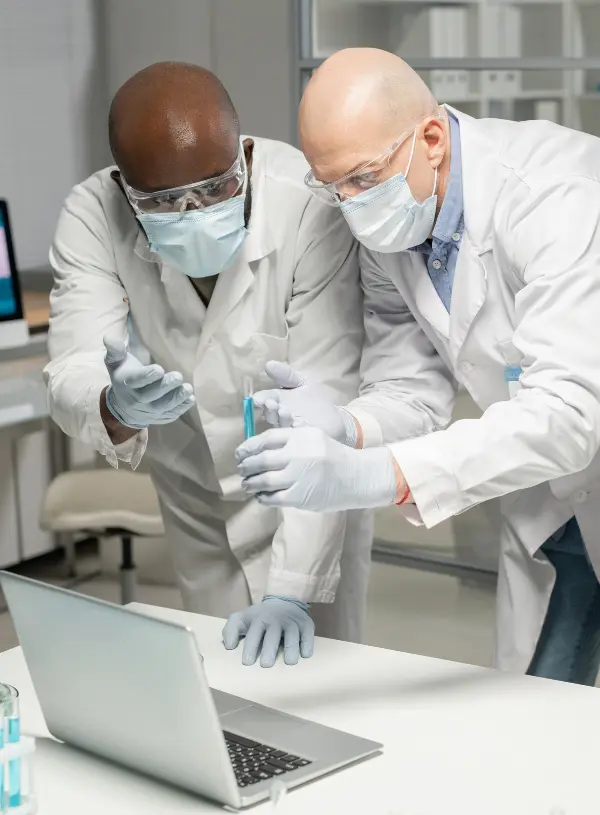
The Yamato mini rotary evaporator addresses each challenge inherent in psychedelic pharmaceutical development. Its broad speed range (5-315 rpm), programmable operation, and precise environmental control make it particularly suited for developing formulations where microgram-level consistency determines trial success. The compact design fits in secure, restricted-access areas while the anti-backflow condenser prevents the contamination that could compromise your controlled substance accountability.
For research teams developing next-generation psychedelic therapeutics, the question isn't whether to use rotary evaporation - it's how to optimize the process for each unique compound and formulation. The controlled conditions, reproducibility, and gentle processing that rotary evaporation provides make it the logical choice for maintaining the delicate balance between creating stable, measurable doses and preserving the therapeutic compounds that make this research so promising.
